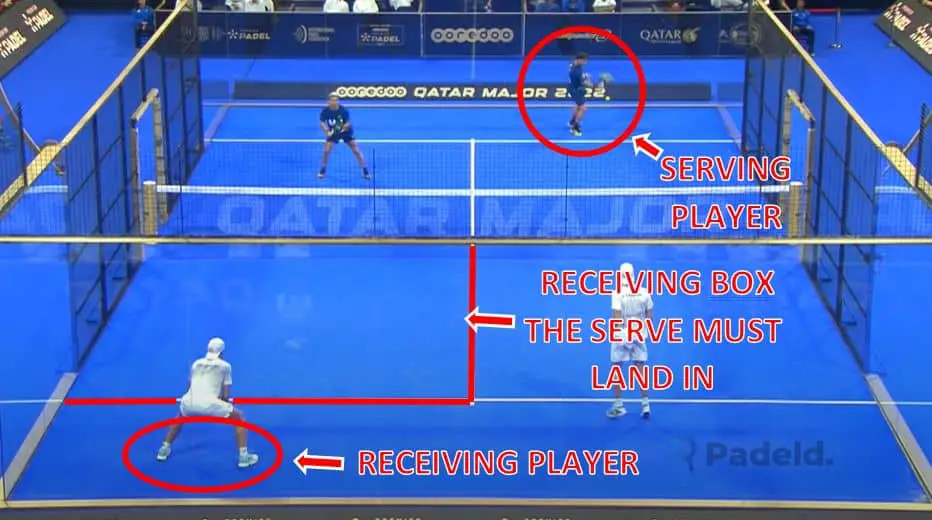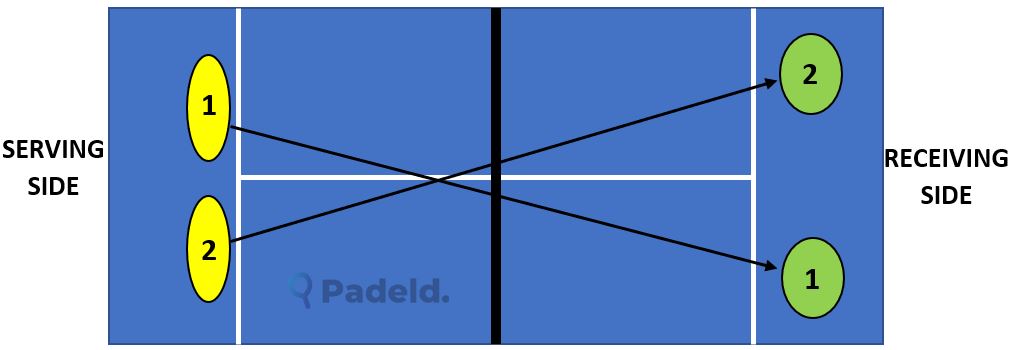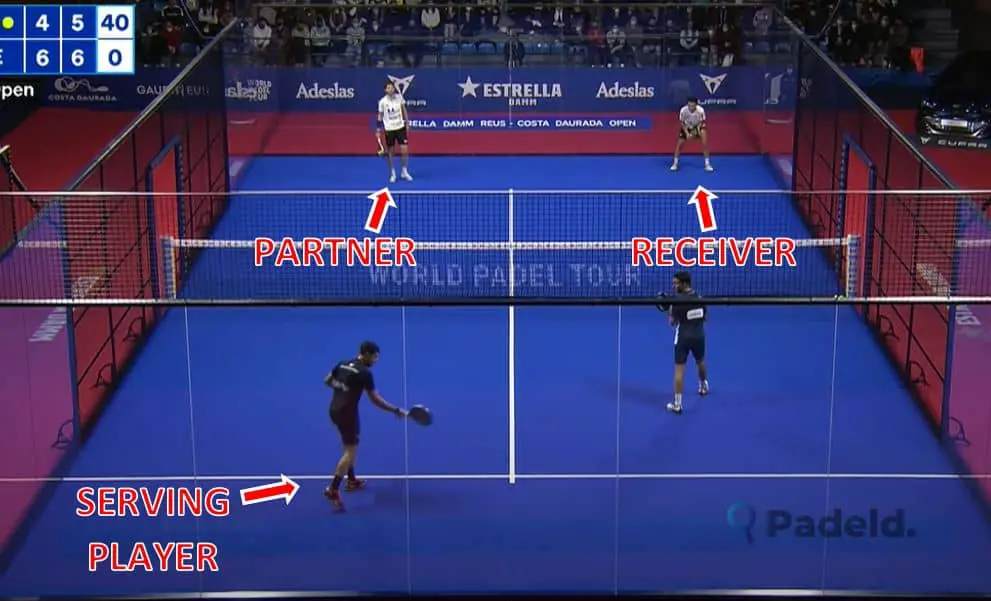Padel is a sport that is currently undergoing an explosion in terms of its popularity. In the last few years alone millions of people across the globe have been introduced to the sport, and consequently this leads to a lot of questions about how the game is played! Anyone who wants to experiment with padel will also want to know that they are playing the game properly!
One of the questions I’ve been asked when I introduce people to the sport is ‘where do you stand to receive a serve’, and that is the question that I’ll be answering in full for you today. We’ll explore the basic positioning for each player, and also cover how this changes depending on where your opponent is serving from. Throughout, I’ll show examples of professional padel players in the positions I’m talking about. Let’s get started!
So, where do you stand to receive a serve in padel?
The player who is receiving the serve must stand on the opposite side of the net to the serving player. Aside from this, the receiving player is allowed to stand in any position on their own side of the court. However, they will usually position themselves diagonally from where the server is standing.
At this point you may be wondering why the receiving player will often choose to stand diagonally across from the serving player given that they are actually allowed to stand anywhere. The answer to this is relatively simple and revolves around the rules of the serve. Basically, when serving, the serving player must hit the ball into the receiving box that is diagonally opposite them. You can see a diagram of this below! So, it makes a lot of sense for the receiving player to position themselves on this side of the court, given that it is where the ball is going to end up.

Another rule of the padel serve is that the receiving player must allow the ball to bounce before they attempt to return it. Therefore, it makes little sense for the receiving player to stand inside their own receiving box that is outlined in red in the diagram above. If the receiving player did stand in this box, a serve that travelled deep into the box could hit them on the body before it bounces or could tempt the receiver to volley the ball. If either of these things happen, the receiving duo will lose the point. Therefore, the optimal position to stand is diagonally across from the serving player but behind the service line – in the position I’m showing below.

Most players will usually stand slightly closer to the wall as the serving player will usually target the corner of the receiving box that is the furthest away from them. If they choose to take up this position, they will need to react and adjust their position quickly when they receive a serve that is directed more towards the central service line.
Where Does The Receiving Player’s Partner Stand During The Serve?
Just like the receiving player is technically allowed to stand anywhere on their side of the court, the receiving player’s partner is also allowed to do the same. However, although there is no restriction on where they can stand, some places are better to stand than others!
The receiving player’s partner will most often stand in the area that I’m highlighting in the diagram below. You can see that they are behind the service line and roughly in line with their partner. Why is this, you may ask? Well…after they serve, the serving duo will usually immediately advance forwards towards the net and will be ready to play an aggressive shot once the serve gets returned. So, it’s natural that the receiving duo will set themselves up towards the back of the court in a slightly more defensive position whilst they attempt to get themselves into the rally. You’ll usually see them play a lob pretty early on in the rally in order to attempt to gain control of the point and get the serving duo to retreat from the net.

When watching elite padel players during a game, you’ll notice that each pair of players are usually in line with each other more often than not. If one player breaks away from the line to hit a shot, they will usually return to the line their partner is on very quickly. This is one of the reasons why you’ll see both the receiving player and their partner take up positions towards the back of the court prior to the serve. Their immediate intention is to adopt a unified, defensive position before attempting to assume control of the point later in the rally. If the receiving player stood at the back of the court and their partner stood close to the net, this would break their line early in the rally and provide the serving duo with opportunities they could exploit.
How Do You Decide Who Returns The Serve In Padel?
In the first receiving game of each set, the receiving players will choose between themselves who is going to be the first one to return the serve. That player will then face the serve for the point that follows. Once that point is complete (when the score is 15-0), their partner will face the serve in the next point. Then during the third point the serve will be returned by the original returner. The responsibility of returning the serve will continue to alternate like this until the game is over.
The player who was chosen to receive first will receive the first serve in each receiving game until the end of the set. At the start of the next set, the players can choose to reverse the order of returns if they wish.
Conclusion
I hope this post has been helpful and has given you plenty of insight into where the receiving duo will usually stand when the serve is hit. Winning points on the opponent’s serve is an important part of winning padel matches, so it’s vital that we go about this in the right way and don’t commit any unforced errors! Stay tuned to Padeld.com for more technical tips that will help you in your quest to improve your game!
